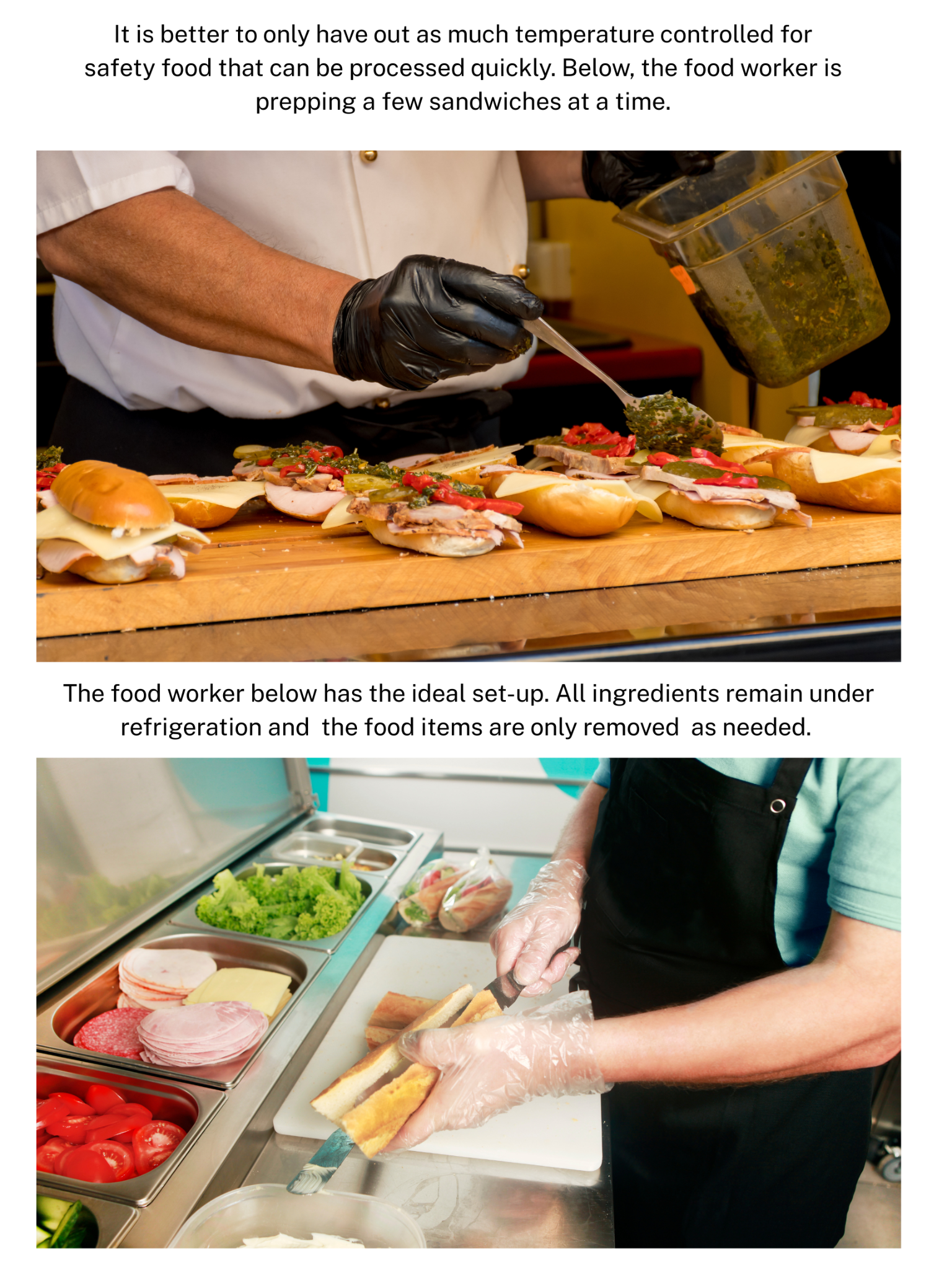44 8.1: Avoiding the Temperature Danger Zone
Preparation Procedures
8.1 Avoiding the temperature danger zone
As discussed in Chapter 5, limiting the amount of time food spends in the temperature danger zone is imperative to keeping food safe. Food cannot spend longer than four hours exposed to temperatures between 41℉ and 135℉ (5℃-57℃). Foods that are time and temperature controlled for safety must be monitored regularly using the appropriate thermometers and by following established procedures for corrective actions. Food that is found to be in the temperature danger zone can be brought back to a safe servable standard if and only if the time and temperature threshold for corrective action has not been exceeded.
A good practice in limiting the time food spends in the temperature danger zone during preparation is to prepare food in small batches. Only remove from the cooler what you will work with quickly. An example of this would be if a food worker was about to dice 20 pounds of chicken breast, he or she would only take out 5 pounds at a time to work with. Keeping the remaining chicken under refrigeration will ensure that pathogens don’t have a chance to grow while sitting out waiting to be processed. In the same way, once foods are finished being prepared, the food employee should either return the prepped chicken to refrigeration or it should be cooked right away to avoid exposure to the temperature danger zone.


